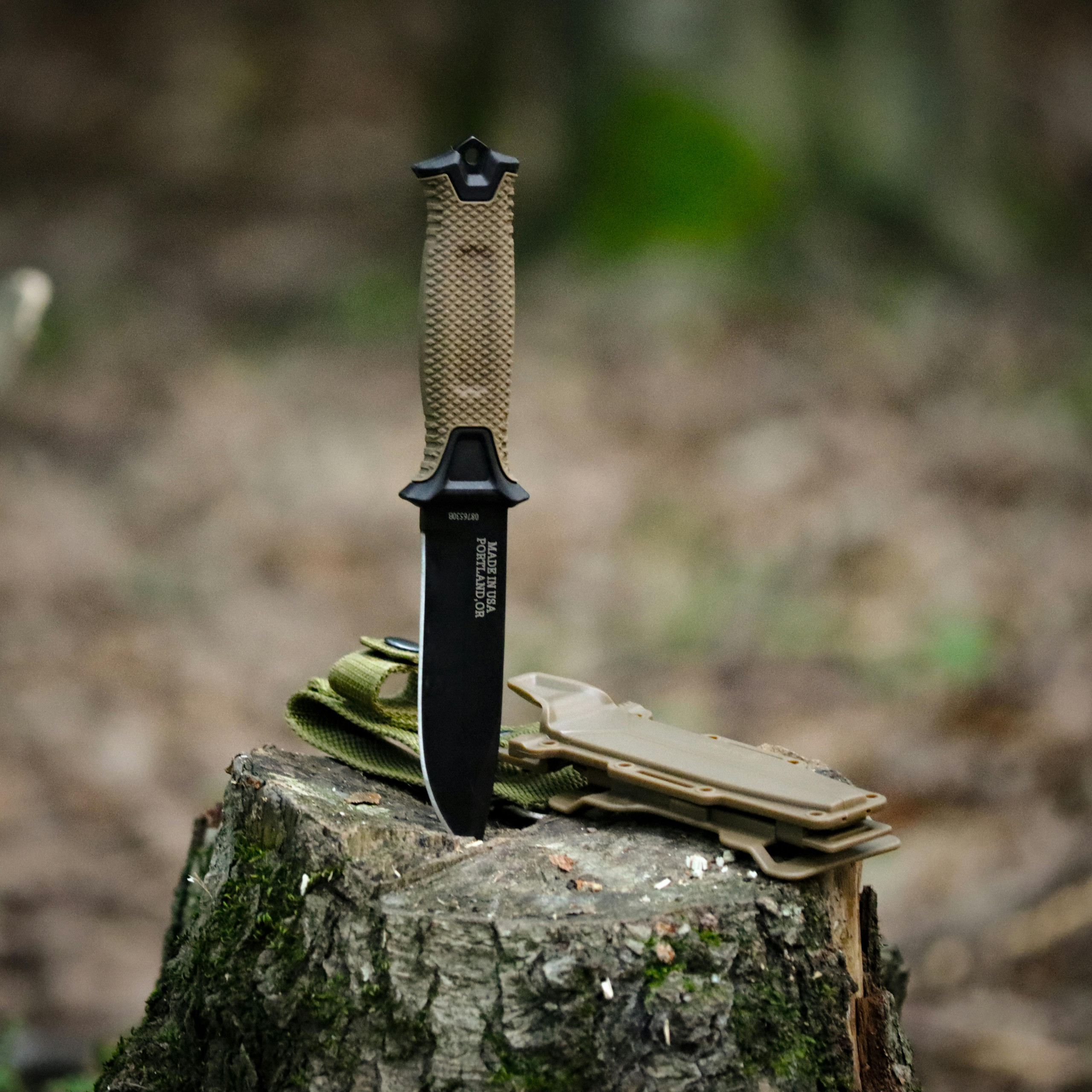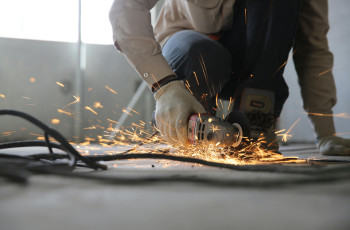Have you ever wondered how long a cordless die grinder can last on a single charge? Or how long it takes to recharge once the battery is depleted? In this article, we will explore the fascinating world of runtime and recharge times for cordless die grinders. With this knowledge, you will be able to make informed decisions about which cordless die grinder is best suited for your needs and never be left in the midst of a project without power again. Let’s dive in and discover the ins and outs of these essential tools!
What is a cordless die grinder?
A cordless die grinder is a versatile and portable power tool that is commonly used in various applications, such as metalworking, woodworking, and automotive repairs. Unlike traditional die grinders that require a power cord, cordless die grinders are battery-powered, providing users with the freedom to move around without being hindered by cords. They are compact in size, lightweight, and easy to maneuver, making them the perfect tool for both professional tradespeople and DIY enthusiasts.
Importance of runtime and recharge times
When choosing a cordless die grinder, it is essential to consider the runtime and recharge times. These factors can greatly impact the efficiency and productivity of your work, as well as the overall convenience and flexibility of using the tool. Additionally, understanding the battery lifespan and cost considerations associated with cordless die grinders is crucial for making an informed decision.
Efficiency and productivity
The runtime of a cordless die grinder directly affects its efficiency and productivity. Longer runtime means more time spent working and less time spent waiting for the battery to recharge. If you are working on a time-sensitive project or have a busy schedule, a cordless die grinder with a longer runtime will allow you to get the job done without interruptions.
Convenience and flexibility
One of the significant advantages of cordless die grinders is their portability. They allow you to work in tight spaces and remote locations without the limitations of a power cord. However, if the runtime is short, you may find yourself constantly swapping batteries or waiting for them to recharge, reducing the convenience and flexibility of the tool. Opting for a cordless die grinder with a longer runtime will ensure that you can work longer without interruption and complete your tasks with ease.
Battery lifespan
The battery lifespan is another important factor to consider when evaluating cordless die grinders. Over time, batteries can lose their ability to hold a charge and may need to be replaced. Choosing a cordless die grinder with a longer battery lifespan will save you money in the long run, as you won’t need to replace the battery as frequently.
Cost considerations
Runtime and recharge times can also have an impact on the cost of using a cordless die grinder. Batteries with longer runtime and shorter recharge times tend to be more expensive. However, investing in a high-quality battery with longer runtime can save you money in the long run by reducing the need for frequent battery replacements.

Factors affecting runtime and recharge times
Several factors can influence the runtime and recharge times of cordless die grinders. Understanding these factors will help you make an informed decision when choosing a tool that suits your specific needs.
Battery capacity
The battery capacity is one of the primary factors determining the runtime of a cordless die grinder. Batteries with higher capacity can store more energy and provide longer operating times. When comparing cordless die grinders, consider opting for a model with a higher battery capacity if runtime is a significant concern for your work.
Battery type
Different cordless die grinders may use various types of batteries, such as lithium-ion or nickel-cadmium. Each battery type has its own set of advantages and disadvantages. Lithium-ion batteries tend to have a higher capacity, longer lifespan, and shorter recharge times compared to nickel-cadmium batteries. However, lithium-ion batteries are generally more expensive. Consider the specific needs of your work and budget when selecting a cordless die grinder with a suitable battery type.
Motor power
The power of the motor in a cordless die grinder can impact both runtime and recharge times. Higher motor power generally means more energy consumption, resulting in shorter runtime. However, a more powerful motor can also improve the efficiency and speed of grinding, reducing the overall work time. Finding the right balance between motor power and runtime is crucial for achieving optimal results.
Grinding intensity
The intensity of the grinding work being performed will also affect the runtime and recharge times of cordless die grinders. Harder materials or heavier workload will require more power, leading to a shorter runtime. If you frequently work on demanding projects, it is advisable to choose a cordless die grinder with a higher battery capacity to ensure sufficient power for extended periods.
Speed settings
Most cordless die grinders offer multiple speed settings to accommodate different applications. Higher speed settings generally consume more energy, resulting in shorter runtime. However, adjusting the speed settings according to the task at hand can help maximize battery life and improve overall efficiency. Using the lowest necessary speed for the job can extend the runtime and reduce the need for frequent recharges.
Understanding runtime
To fully grasp the importance of runtime in cordless die grinders, it is essential to understand what it means and how it is measured.
Definition of runtime
Runtime refers to the amount of time a cordless die grinder can operate continuously on a single battery charge before needing to be recharged. It is measured in minutes or hours and is a crucial factor in determining the overall productivity and efficiency of the tool.
How runtime is measured
Manufacturers typically indicate the runtime of cordless die grinders based on specific operating conditions. However, it is important to note that the actual runtime can vary depending on various factors, such as the battery capacity, motor power, grinding intensity, and speed settings. It is advisable to refer to the manufacturer’s specifications and user reviews for a more accurate estimate of runtime.
Factors affecting runtime
As mentioned earlier, several factors can influence the runtime of cordless die grinders. Battery capacity, motor power, grinding intensity, and speed settings all play a role in determining how long the tool can operate before requiring a recharge. Understanding these factors can help you make an informed decision when selecting a cordless die grinder that meets your specific runtime requirements.
Typical runtime for cordless die grinders
The runtime of cordless die grinders can vary significantly depending on the aforementioned factors. However, on average, cordless die grinders with higher battery capacities and lower power consumption can provide runtime ranging from 30 minutes to 2 hours. It is important to consider your specific work requirements and opt for a cordless die grinder with an appropriate runtime to ensure uninterrupted operation.

Understanding recharge times
In addition to runtime, recharge times are another crucial aspect to consider when choosing a cordless die grinder. Understanding what recharge time means, as well as the factors that affect it, will help you better assess the practicality and convenience of the tool.
Definition of recharge time
Recharge time refers to the amount of time it takes to fully recharge the battery of a cordless die grinder. It is measured in minutes or hours and can vary depending on several factors, such as the battery capacity, charging method, and technology used.
Factors affecting recharge time
The recharge time of a cordless die grinder is primarily influenced by the battery capacity and the charging method. Higher battery capacities generally require longer recharge times, while advanced charging technologies can significantly reduce the overall charging time. It is important to consider your work schedule and the urgency of your tasks when evaluating the recharge time of cordless die grinders.
Charging methods and technologies
Cordless die grinders can be charged using various methods, including standard chargers, fast chargers, and rapid chargers. Standard chargers typically take longer to recharge the battery fully, while fast chargers and rapid chargers utilize advanced technologies to shorten the charging time. Some cordless die grinders also offer the option of quick charge capability, allowing users to recharge the battery in a shorter amount of time.
Typical recharge times for cordless die grinders
The recharge times of cordless die grinders can vary depending on factors such as battery capacity, charging method, and charging technology. On average, standard cordless die grinders may take anywhere from 1 to 4 hours to fully recharge, while those equipped with fast charging or rapid charging technologies can significantly reduce the recharge time to as little as 30 minutes to 1 hour. It is important to review the manufacturer’s specifications and user reviews to determine the typical recharge times for specific models.
Tips for maximizing runtime and reducing recharge times
To make the most of your cordless die grinder and ensure optimal runtime and recharge times, consider implementing the following tips:
Choose a higher capacity battery
Opt for a cordless die grinder with a higher battery capacity to extend the runtime. Higher capacity batteries can provide more power and allow continuous operation for longer periods, reducing the need for frequent recharging.
Consider the battery type
Select a cordless die grinder that uses lithium-ion batteries if runtime is a significant concern. Lithium-ion batteries generally have higher capacities and shorter recharge times compared to other battery types, such as nickel-cadmium.
Use lower power settings when possible
Adjust the speed settings of your cordless die grinder according to the task at hand. Using lower power settings whenever feasible can help conserve battery power and extend the runtime.
Properly maintain and clean the grinder
Regularly clean and maintain your cordless die grinder to ensure optimal performance. Dirt, debris, and excessive heat can affect the battery life and overall efficiency of the tool. Follow the manufacturer’s instructions for cleaning and maintenance procedures.
Utilize fast charging technology
If available, utilize fast charging or rapid charging technology to reduce recharge times. This can be particularly beneficial for projects with tight deadlines or when you need to quickly get back to work after the battery has been depleted.

Comparing cordless die grinders based on runtime and recharge times
To make an informed decision when purchasing a cordless die grinder, it is important to compare different models based on their runtime and recharge times. Here are some strategies to consider:
Researching and comparing specifications
Review the specifications of various cordless die grinders to determine the runtime and recharge times they offer. Consider your specific work requirements and match them with the cordless die grinder that provides the appropriate runtime and recharge times.
Reading customer reviews and feedback
Reading customer reviews and feedback can provide valuable insights into the actual runtime and recharge times of different cordless die grinders. Look for reviews from users who have similar work requirements to yours to get a better understanding of how the tool performs in real-world scenarios.
Considering brand reputation and warranty
Consider the reputation of the brand when comparing cordless die grinders. Established and trusted brands often manufacture tools with higher quality batteries and more reliable charging systems. Additionally, check the warranty offered by the manufacturer to ensure that you are protected in case of any issues with the runtime or recharge times.
Practical applications and scenarios for cordless die grinders with different runtime and recharge times
The runtime and recharge times of cordless die grinders can make a significant difference in various practical applications and scenarios. Here are a few examples:
Light-duty DIY projects
For occasional DIY projects around the house, a cordless die grinder with a shorter runtime and longer recharge time may be sufficient. These projects typically require shorter operating periods and allow enough time for the battery to recharge between uses.
Heavy-duty professional use
Professional tradespeople who often use cordless die grinders for extended periods of time require tools with longer runtimes and shorter recharge times. Investing in cordless die grinders with higher battery capacities and fast charging capabilities can significantly improve productivity and minimize downtime.
On-the-go or remote work
If you frequently work in remote locations or move from one job site to another, a cordless die grinder with a longer runtime is essential. This allows you to work without interruptions and eliminates the need for frequent battery changes or recharges.
Usage in industrial settings
In industrial settings where continuous and intensive grinding tasks are common, cordless die grinders with longer runtimes and rapid charging capabilities are crucial. These tools can handle longer operating periods and provide quick recharging to minimize downtime and maximize efficiency.
Common misconceptions about cordless die grinder runtime and recharge times
When considering runtime and recharge times for cordless die grinders, it is important to dispel common misconceptions:
All cordless die grinders have the same runtime
This is not true. Cordless die grinders come in a variety of models with different battery capacities, motor powers, and grinding intensities, all of which can affect the runtime. It is essential to evaluate the specifications and choose a model that suits your specific needs.
Higher capacity batteries always result in longer runtime
While higher capacity batteries generally provide longer runtime, other factors such as motor power and grinding intensity can impact the actual operating time. Consider all relevant factors when evaluating the runtime of cordless die grinders.
Short recharge times indicate lower quality
Fast charging technologies have improved significantly in recent years, allowing for shorter recharge times without compromising the battery or overall quality of the cordless die grinder. Short recharge times can be a sign of advanced charging capabilities and should not be seen as an indicator of lower quality.
Conclusion
Understanding the runtime and recharge times of cordless die grinders is crucial for making an informed purchasing decision. Factors such as battery capacity, battery type, motor power, grinding intensity, and speed settings can all impact the overall performance and efficiency of the tool. By considering your specific work requirements and evaluating the runtime and recharge times of different models, you can choose a cordless die grinder that meets your needs and enhances productivity. Remember to implement tips for maximizing runtime and reducing recharge times to ensure optimal performance and longevity of your cordless die grinder.



